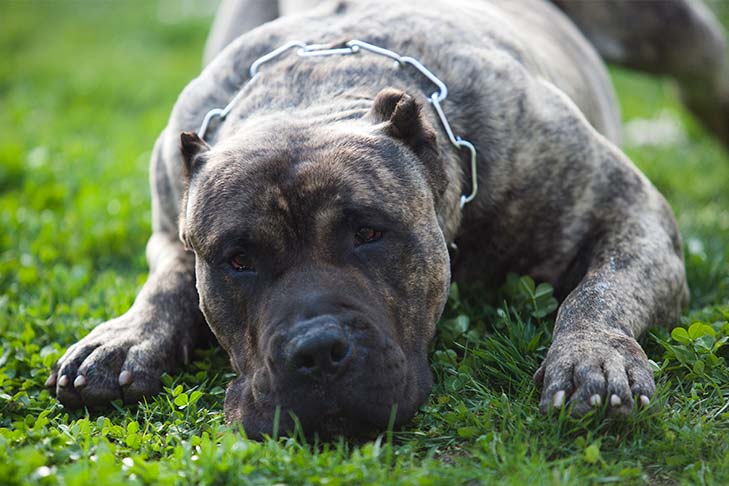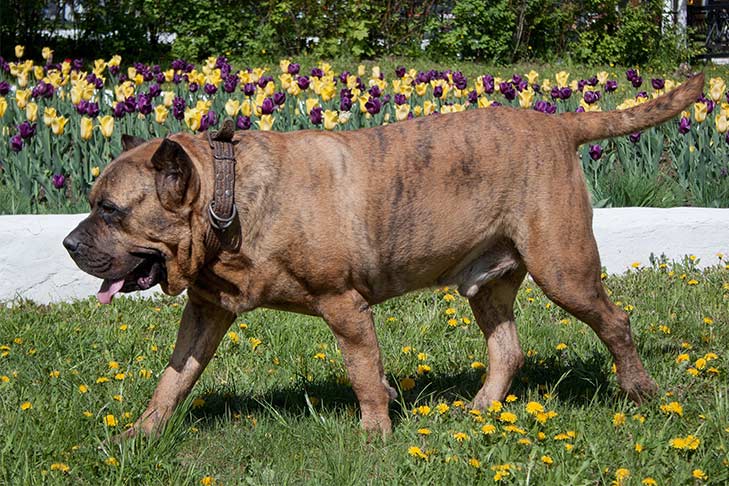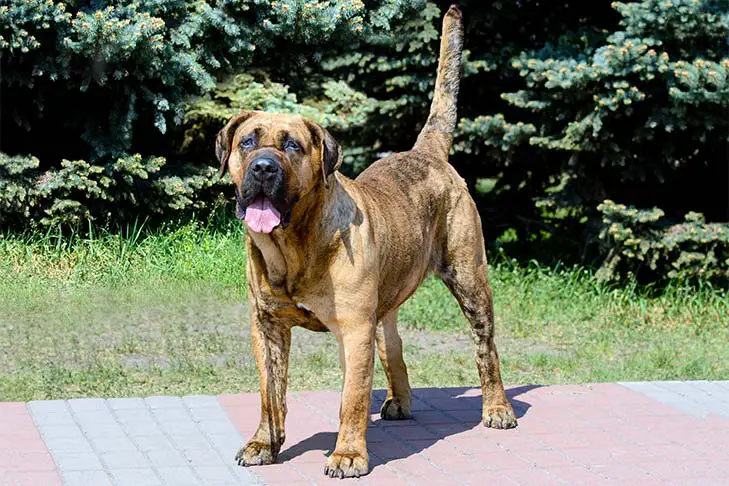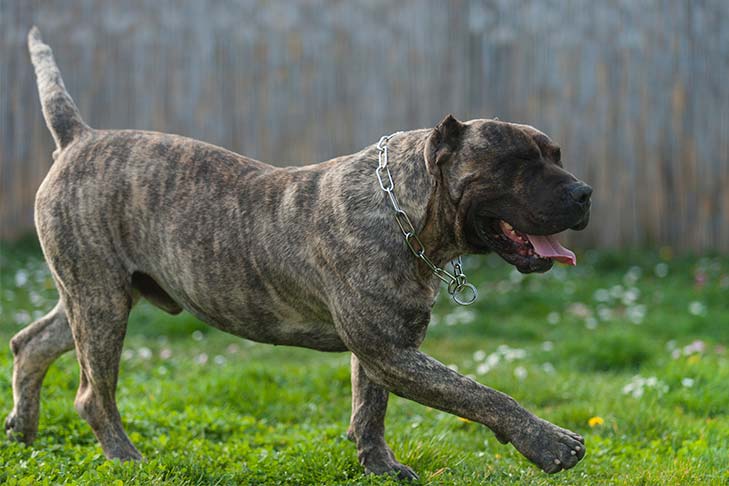There are numerous books written by Historians concerning the development of the known Perro de Presa Canario (the “Canary Dog of Prey”). Documentation of the original holding dogs dates back to the fifteenth and sixteenth centuries. Following the conquest of the Canary Islands, it is theorized dogs of great size may have existed or were brought there by the Spanish Conquistadors or possibly both. What is known as the function for which these dogs were developed: guarding farms, working cattle, and extermination of wild or stray dogs.
There are several theories regarding the genetic contributions to the creation of the Presa Canario. It is almost certain that the cattle dog, the Iberian Presa (Perro de Ganado Majorero) provided a start to the founding of the Canary Presa. The Ganado was a mastiff type of average size, rustic, intelligent with an intuitive instinct; a fearless guardian. Several other Hispanic breeds contributed to the Presas formation, especially the Presa Espanol in its large varieties and the bulldog varieties (Alano), known for its clutching instincts. In time, the island dogs developed into a completely differentiated breed due to the influence of the Spanish breeds. The final ingredient that completes the foundation of the Presa Canario was the genetic infusion of the Bardino Majorero, a pre-Hispanic sheepdog originating on the Island of Fuerteventura. This dog was introduced for its intelligence, and physical resistance, offering excellent guardian instincts with little bark, an extraordinary set of teeth, and incorruptible courage. With the combination of all these traits, one more was added to the mix: the ability to fight.
In the 1940s, the prohibition of dog fighting was ordered throughout the islands, although clandestine fights were known to continue during the next decade. It was during this period the Presa Canario numbers truly faltered. The sovereignty of the island of Presa worsened further with the introduction of the German Shepherd, Doberman Pinscher, and Great Dane. The island dog fancier’s interest now focused on these new breeds, almost causing the demise of the Presa Canario breed. During this darkened period, the Presa was relegated in small numbers to farmers and herdsmen as their primary guard dog.
Reconstruction of the nearly extinct Presa Canario began in earnest back in the early 1970s. Reputable breeders bred strong Presas that were rustic, massive, vigorous, and functional, who had acute watchdog instincts, a strong temperament, were calm yet confident, and were extremely territorial with unlimited courage. This dog, when defending what he considers his, would withstand the harshest of punishments without surrendering his position.
Full recovery of the Presa Canario heritage started in 1982 when a group of breeders from the island of Tenerife formed an association with the goal to propagate the resurgence of the Presa Canario as stated in the previous decades.







 Health
Health Grooming
Grooming Exercise
Exercise Training
Training Nutrition
Nutrition